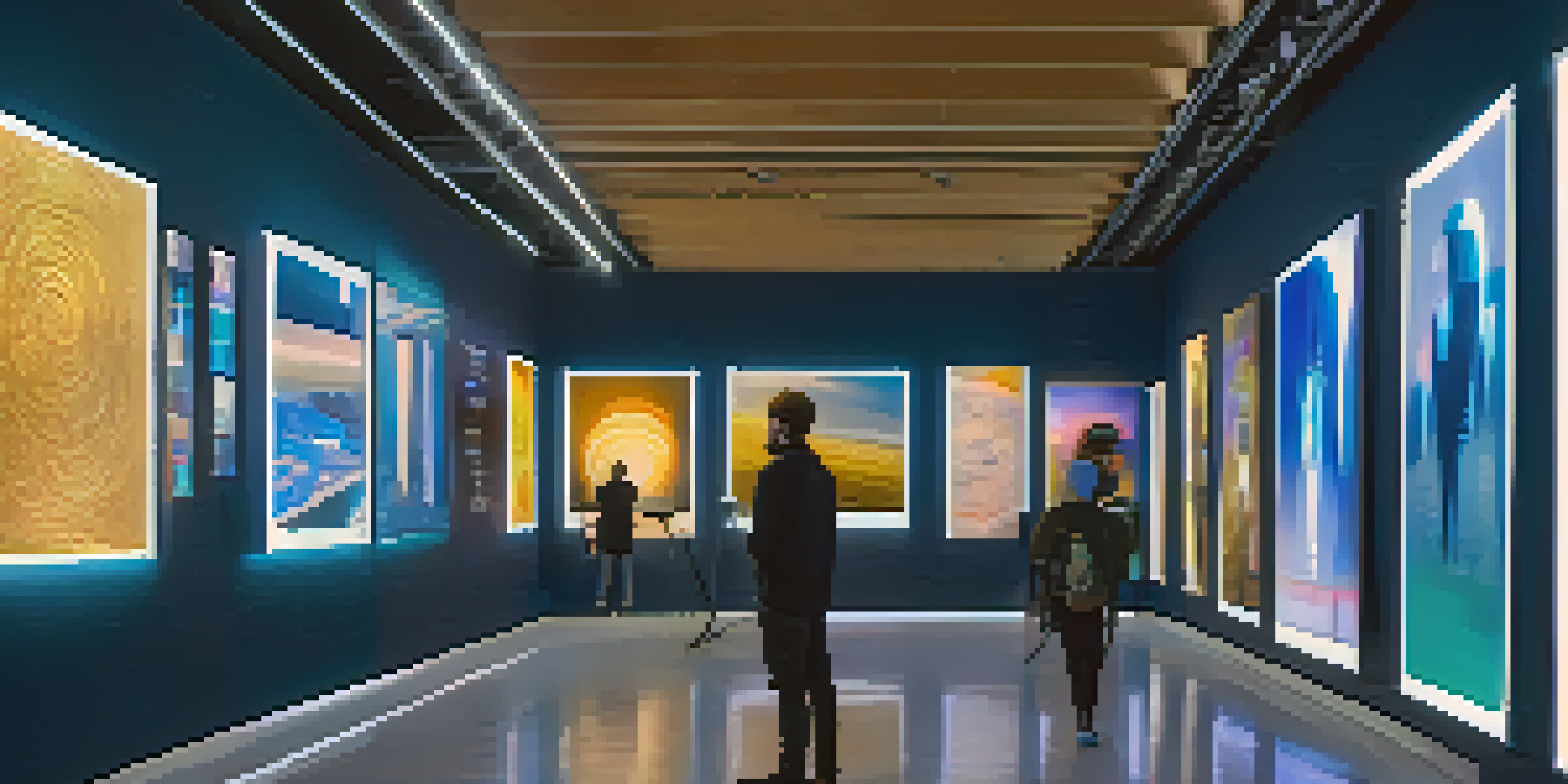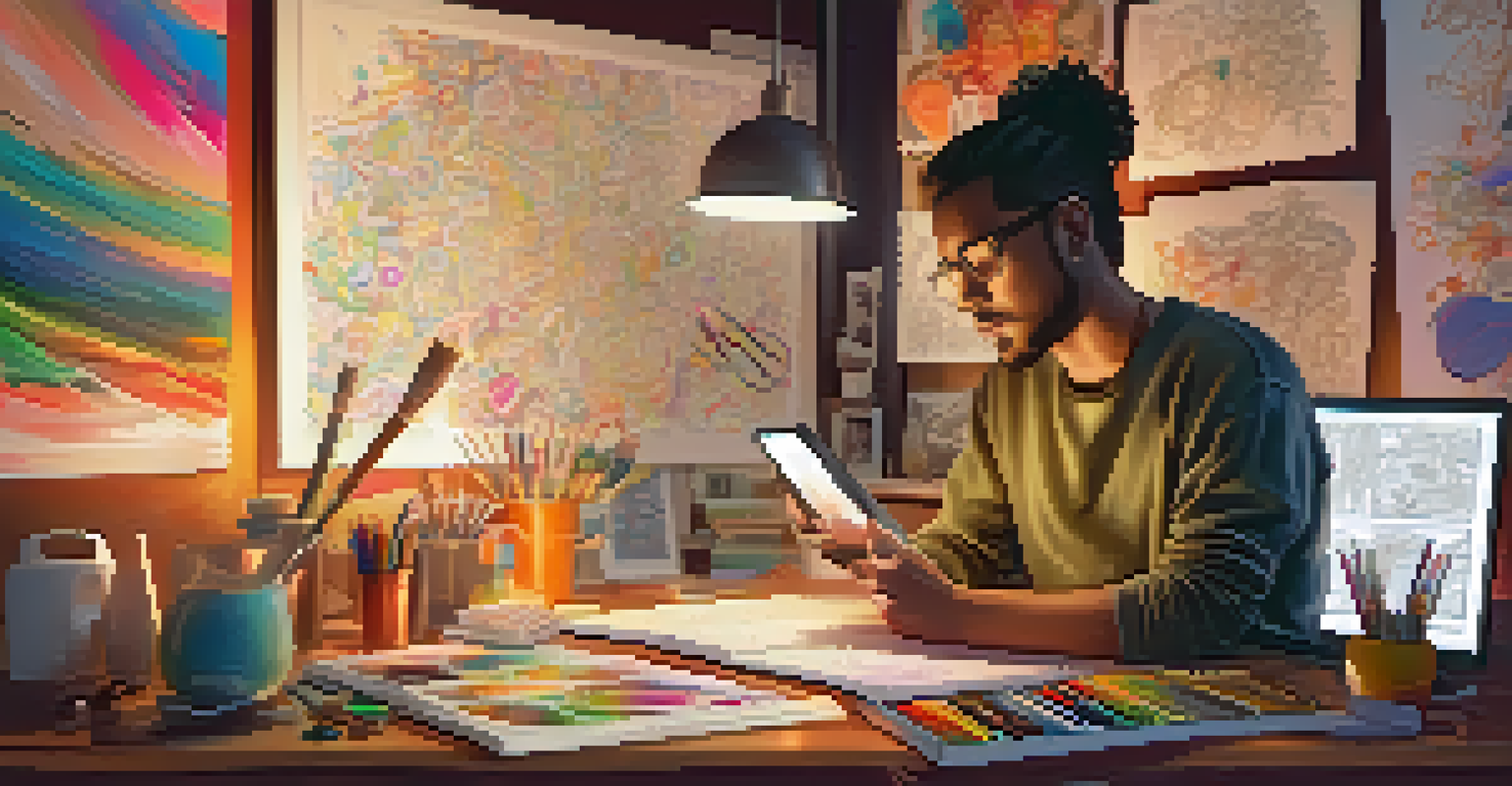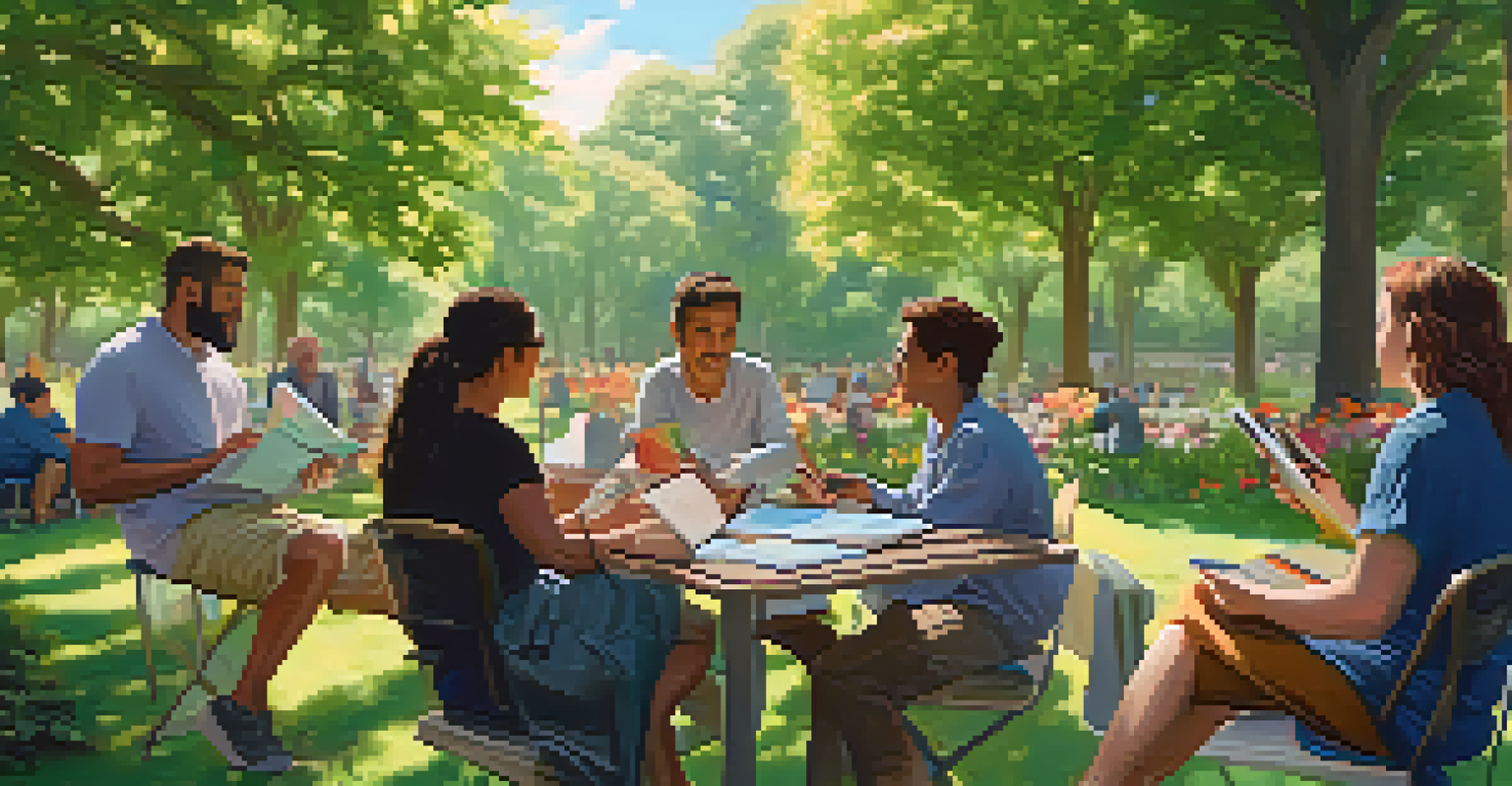Evolving Digital Rights: The Impact of NFTs on Creators

Understanding NFTs and Their Rise in Popularity
Non-fungible tokens, or NFTs, are unique digital assets that represent ownership of a specific item or piece of content. Unlike cryptocurrencies like Bitcoin, which are interchangeable, each NFT is distinct, making it ideal for creators wanting to sell one-of-a-kind digital works. The rise of blockchain technology has facilitated their growth, allowing creators to establish authenticity and provenance for their art, music, and more.
NFTs are a way to give artists a more equitable way to monetize their work and connect with fans directly.
The popularity of NFTs surged in 2021, drawing attention from artists, musicians, and even large brands looking to enter this new market. For example, Beeple, a digital artist, sold an NFT for a staggering $69 million, showcasing the potential for significant financial gain. This moment not only elevated NFTs but also sparked widespread interest in how digital ownership can be redefined.
As more creators explore this space, it's crucial to understand the implications of NFTs on digital rights. These tokens offer new opportunities for monetization, but they also raise questions about copyright, licensing, and ownership that artists must navigate carefully.
How NFTs Empower Creators in the Digital Space
One of the most compelling aspects of NFTs is their ability to empower creators by giving them more control over their work. Traditionally, artists often rely on intermediaries—like galleries or streaming platforms—that can take a significant cut of their earnings. With NFTs, creators can sell directly to their audience, keeping a larger share of the profit.

Moreover, NFTs can include smart contracts, which are self-executing contracts with the terms directly written into code. This means that creators can earn royalties every time their NFT is resold, ensuring they continue to benefit from their work over time. This is a revolutionary shift from traditional models where artists may see little return once their work is sold.
NFTs Empower Creators Directly
NFTs allow creators to sell directly to their audience, increasing their earnings and control over their work.
For many creators, this newfound freedom can lead to a more sustainable career. By leveraging NFTs, artists can build a direct relationship with their fans, fostering community and loyalty while also diversifying their income streams.
Navigating the Complexities of Digital Ownership
While NFTs offer exciting opportunities, they also introduce complexities around digital ownership that creators must understand. Owning an NFT doesn't necessarily mean owning the copyright to the work itself. Instead, it signifies ownership of a specific token that represents the asset, which can lead to confusion for both creators and buyers.
The beauty of NFTs is that they can provide not just ownership, but also the ability for creators to earn royalties each time their work is sold.
It's essential for creators to clarify the rights associated with their NFTs. For instance, some creators may choose to retain copyright, allowing them to control how their work is used, while others may transfer full rights to the buyer. This distinction can significantly impact how their work is perceived and utilized in the digital landscape.
Educating themselves about licensing and copyright laws is crucial for artists venturing into the NFT space. By doing so, they can protect their rights while also ensuring that buyers understand what they are purchasing, fostering a transparent and trustworthy marketplace.
The Environmental Impact of NFTs and Solutions
One of the criticisms of NFTs is their environmental impact, primarily due to the energy-intensive processes involved in minting and trading them on certain blockchain networks. Many NFTs are built on Ethereum, which has faced scrutiny for its carbon footprint. This concern has led many creators and buyers to reconsider their involvement in the NFT space.
Fortunately, the industry is actively seeking solutions to mitigate these environmental issues. Emerging technologies, such as proof-of-stake mechanisms and layer-2 solutions, aim to make blockchain transactions more energy-efficient. Some platforms are even committing to carbon offsets, striving to create a more sustainable NFT marketplace.
Understanding Digital Ownership
Owning an NFT does not equate to owning the copyright, making it crucial for creators to clarify rights associated with their tokens.
As awareness grows, many creators are choosing platforms that prioritize sustainability. By aligning with eco-friendly practices, they not only contribute to a healthier planet but also resonate with a conscientious audience that values environmental responsibility in their purchasing decisions.
NFTs and the Role of Community in Creator Success
Community plays a vital role in the success of NFTs and their creators. The rise of social media and online communities allows artists to engage with their audience directly, fostering a sense of belonging and loyalty. This connection is particularly important in the NFT space, where buyers often seek to support artists whose work they resonate with.
Creating a strong community can enhance the value of an NFT. When fans feel invested in an artist's journey, they are more likely to purchase and promote their work. For instance, many creators host virtual events or exclusive releases for their community members, solidifying their relationships and enhancing the overall experience.
Additionally, community-driven initiatives can lead to collaborative projects, further expanding a creator's reach. By leveraging the power of their supporters, artists can navigate the complexities of the NFT market with greater ease and assurance.
The Future of NFTs and Digital Rights for Creators
As the NFT landscape continues to evolve, so too will the implications for digital rights and creator ownership. We can expect to see more innovative solutions that address current challenges, such as copyright issues and environmental concerns. This evolution will likely lead to a more refined understanding of what it means to own digital art and assets.
Furthermore, as mainstream adoption grows, more creators will enter the NFT space, enriching the marketplace with diverse voices and perspectives. This influx could drive creativity and innovation, pushing the boundaries of what NFTs can represent and how they can be utilized.
Community Drives NFT Success
Building a strong community enhances an artist's reach and value, as engaged fans are more likely to support and promote their work.
Ultimately, the future of NFTs holds great promise for creators, provided they remain informed and engaged. By understanding their rights and responsibilities within this new framework, artists can harness the full potential of NFTs, transforming their digital creations into sustainable livelihoods.
Conclusion: Embracing the Change in Digital Rights
The rise of NFTs represents a significant shift in the landscape of digital rights for creators. By offering new ways to monetize their work and engage with audiences, NFTs empower artists to reclaim control over their creations like never before. However, with this power comes the responsibility to navigate the complexities that accompany digital ownership.
As creators explore this exciting frontier, it's essential to stay informed about the implications of NFTs on their rights and the environment. By doing so, they can make conscious choices that align with their values while also contributing to a more equitable and sustainable digital marketplace.

In embracing these changes, creators can not only thrive in the NFT space but also inspire a new wave of digital innovation that honors artistic integrity and fosters a deeper connection with their audience.